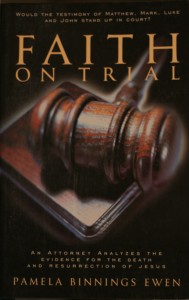Peter, The Rock
A powerful chain of proof!
Well I’ve been back from Italy for almost a month and still have the apostle, Peter, on my mind. I’ve just finished page proofs for Secret of the Shroud, and Peter plays a part in that story. As some of you know, Jimmy and I were lucky enough to take the SCAVI tour through the archeological digs beneath the Vatican. In the 1960’s the Vatican found Peter’s grave, and his bones. During that tour, surely we stood together in a holy place. But there’s much more evidence that Peter was just as described in the New Testament.
He’s a fascinating person. In the Gospels Jesus said that Peter was his rock, and upon that rock he would build his church. And he said this the night before he was crucified, knowing that the next day, through fear, Peter would deny him three times. Before the resurrection Peter’s courage wavered. But afterwards, he became the steadfast rock, the apostle who was crucified upside down in Rome.
Did you know that archeologists believe that they have found the house of Peter in Capernaum, Isreal? Here’s how they came to that conclusion. The Gospels of Matthew and Mark both state that Simon Peter and his brother, Andrew, owned a house in Capernaum and that Jesus spent much time there during his last year. And those books, plus the Gospel of Luke, all report that Jesus stayed in this house and taught in the synagogue in the town.
Remains of the earliest Christian church have been located in Capernaum. The church was built in an octagon shape, indicating that it marked a sacred place. Coins and ceramics evidence that this church was built in the fifth Century, but records of pilgrams refer to it as marking the house of the ‘first of the apostles.’ Here’s the quote: “In Capernaum, moreover, out of the house of the first of the apostles a church has been made, the walls of which still stand just as they were. Here the Lord cured a paralytic.”
In addition, in 570 A.D., this church was described as a basilica that preserved the house of Peter.
When the octagonal church was excavated by archeologist Virgilio Corbo, in the lower levels the ruins of a house of the early first century were discovered. This small house is different from others discovered around it. The floors are made of beaten earth and expensive basalt pebbles, and its walls were constantly replastered and decorated over the centuries, back to the first, evidencing special attention. The house appears to have been venerated over the centuries.
Graffiti in many languages referencing the apostle Peter covers the walls. One room in particular is identified as having special meaning for early Christians. The words “Peter,” “Christ have mercy,” “Lord Jesus help,” and a Latin inscription with the names of Rome and Peter have all been found in these plaster fragments. The graffiti also includes many other symbols of Christianity, such as the fish.
So archeologists have interpreted these findings to indicate that the house, and particularly the room described above, were likely the home of Peter. And today visitors to Isreal can visit this wonderful place in Capernaum.
As a former agnostic, this kind of evidence fascinates me. Christianity is the only world religion based upon statements of fact that can be tested. They’re either true, or they’re not. The evidence I found to corroborate the testimonies of Matthew, Mark, Luke, and John, is set out in my first book, a non-fiction book for people who have questions–Faith On Trial.
Over the next few months, I’ll cover more evidence in these blogs for those of you who are interested, or know someone who doubts.
But here’s the thing. If you add each piece of evidence to the next, and the next…pretty soon you come up with a strong chain of proof. Powerful evidence that the Gospels are reliable proof of the life, death, and resurrection of Jesus Christ.







